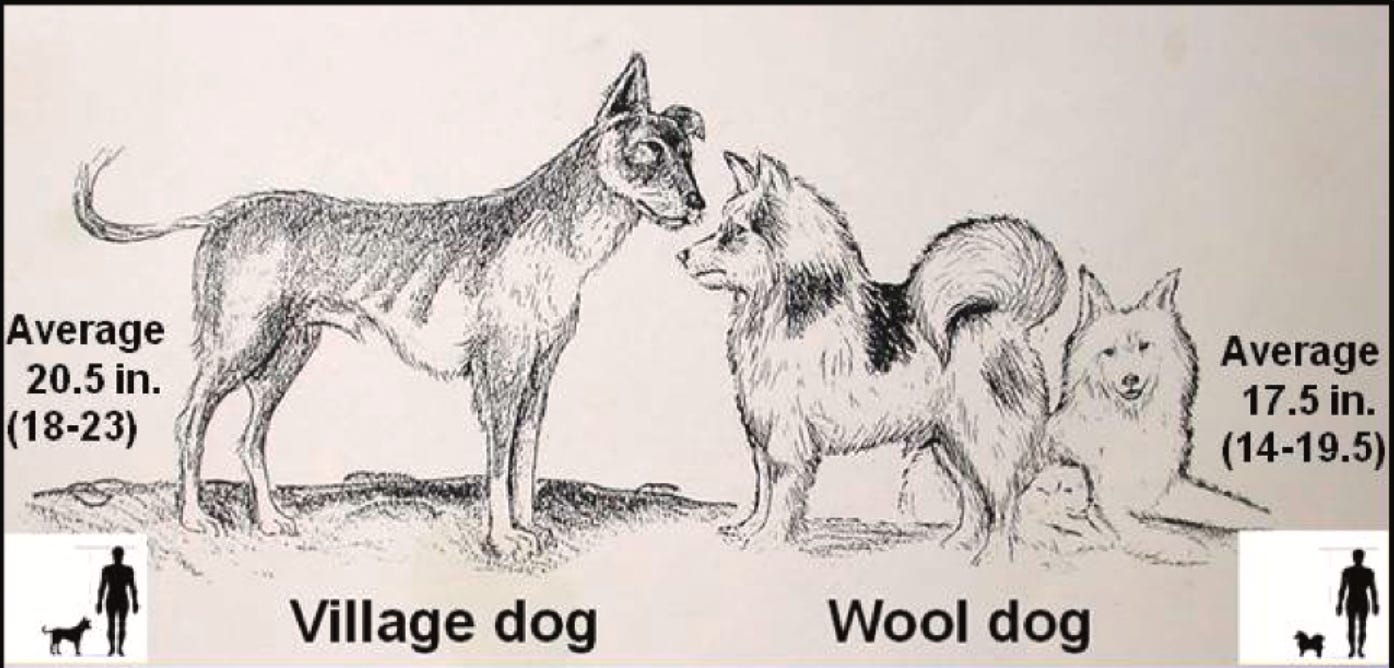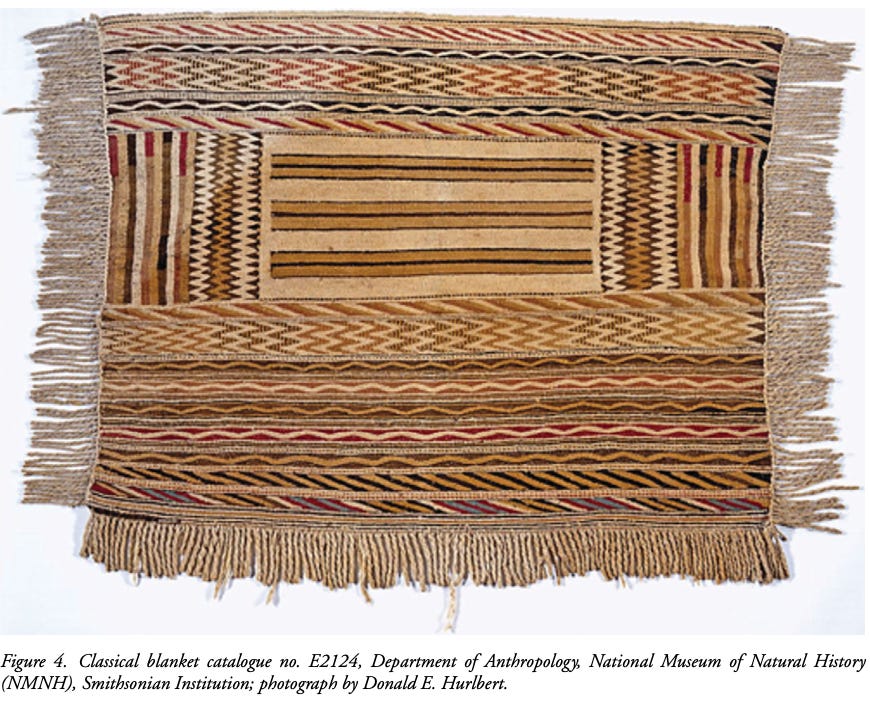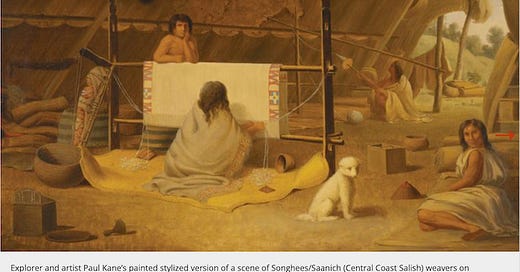Seattleites are notoriously poochiphilic. In 2019, a Rover/Redfin report ranked the city No. 1 Most Dog-Friendly City and the 2020 census showed that city residents have more dogs than children, 153,000 to 107,178. This is not the first time outsiders have noted the region’s dogs.
Sailing down Puget Sound on May 24, 1792, Captain George Vancouver wrote in his journal of an abundance of dogs, which “were all shorn as close to the skin as sheep are in England…and were composed of a mixture of a coarse kind of wool, with very fine long hair, capable of being spun into yarn.” A few weeks later Vancouver added that Mr. Whidbey had observed about 200 Native people “walking along the shore [of what is now Camano Island], attended by about forty dogs in a drove.” The dogs, too, were shorn.
Forty nine years later, when the U.S. Exploring Expedition (US.Ex.Ex.) sailed down the Sound, the dogs also attracted the attention of the crew. One noted that dogs were domesticated and numerous and another observed blankets made of dog hair. The first high quality description and image came from Canadian artist Paul Kane who painted the dogs in 1847 and wrote that they had “long hair of a brownish black and a clear white.”
A detailed 2020 archeological study (see image for citation) reported that Coast Salish people had two dog types. The larger village dog, used more for hunting, was a “medium-sized dingo-like animal.” The wool dog was “a smaller spitz-like dog” with long hair. By the end of the 1800s, though, the woolly dog and the village dog were both extinct; the wool was no longer valued and both types had bred too often with European breeds to remain distinct.
The researchers further observed that domesticated dogs showed up in the archaeo-logical record for more than 6,000 years; that blankets made from mountain goats and/or dog wool were “probably the most important form of wealth among the Coast Salish;” that the dogs’ diets was similar to their humans and consisted of herring, salmon, and anchovy; and that dog bones occurred in 173 of 210 archeological sites, in many cases “deliberately buried with people.” Adding to the unique and special status of Coast Salish dogs, the only other group of Native people in North and South America to domesticate an animal in order to use their hair for spinning wool for textiles were ancient Peruvians, who used alpaca and llama.

A different team of researchers also examined 11 regional blankets dating from the Lewis and Clark Expedition to before 1927. Several were obtained between 1838 and 1842, when the US.Ex.Ex. visited these parts. All contained a mixture of woolly dog- and mountain goat-based fibers and one from the US.Ex.Ex. incorporated pure dog-hair yarn.

The domestication of dogs, the rise of animal husbandry, and the use of dog fiber yarn in weaving further illustrate the complexity of life that has persisted for thousands of years around the Salish Sea. They also reveal a fundamental aspect of dogs, that long ago, they figured us out and realized that people could be domesticated to aid dogs and make them happy with food and shelter. I, for one, am certainly glad that they did. Woof woof.
Word of the Week - Dog - A domesticated mammal known scientifically as Canis familiaris. The OED notes that the origin and etymology of dog is unknown. The great book adds that “dog belongs to a set of words of uncertain or phonologically problematic etymology…which form both a morphological and a semantic group, as they are usually Old English weak masculine nouns and denote animals, such as frog, hog, and pig.”
Always nice to get a positive review. Here’s one for Homewaters.
And, I will be interviewing Iris Graville, May 12, for her splendid new book, Writer in a Life Vest: Essays from the Salish Sea. 7pm. Third Place Books, Lake Forest Park






Dear SSN. Always fascinating, always introducing us to nearby places and settings we never knew. Passing this along to dog people and to people people. Thanks.
I have wondered if there would be enough DNA left in those blankets to determine which genes are likely responsible for the 'wool' growing. My suspicion is that some where in the world are some living dogs with those genes likely hiding. If so it is possible to come up with a dog very much like those now extinct dogs. The wool, grown by local tribes would be very valuable.